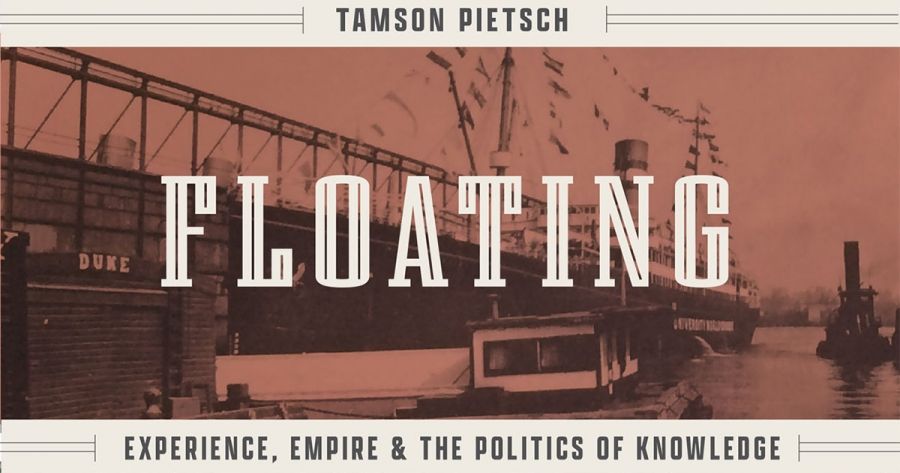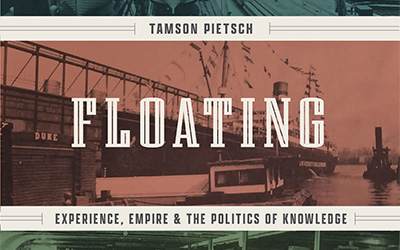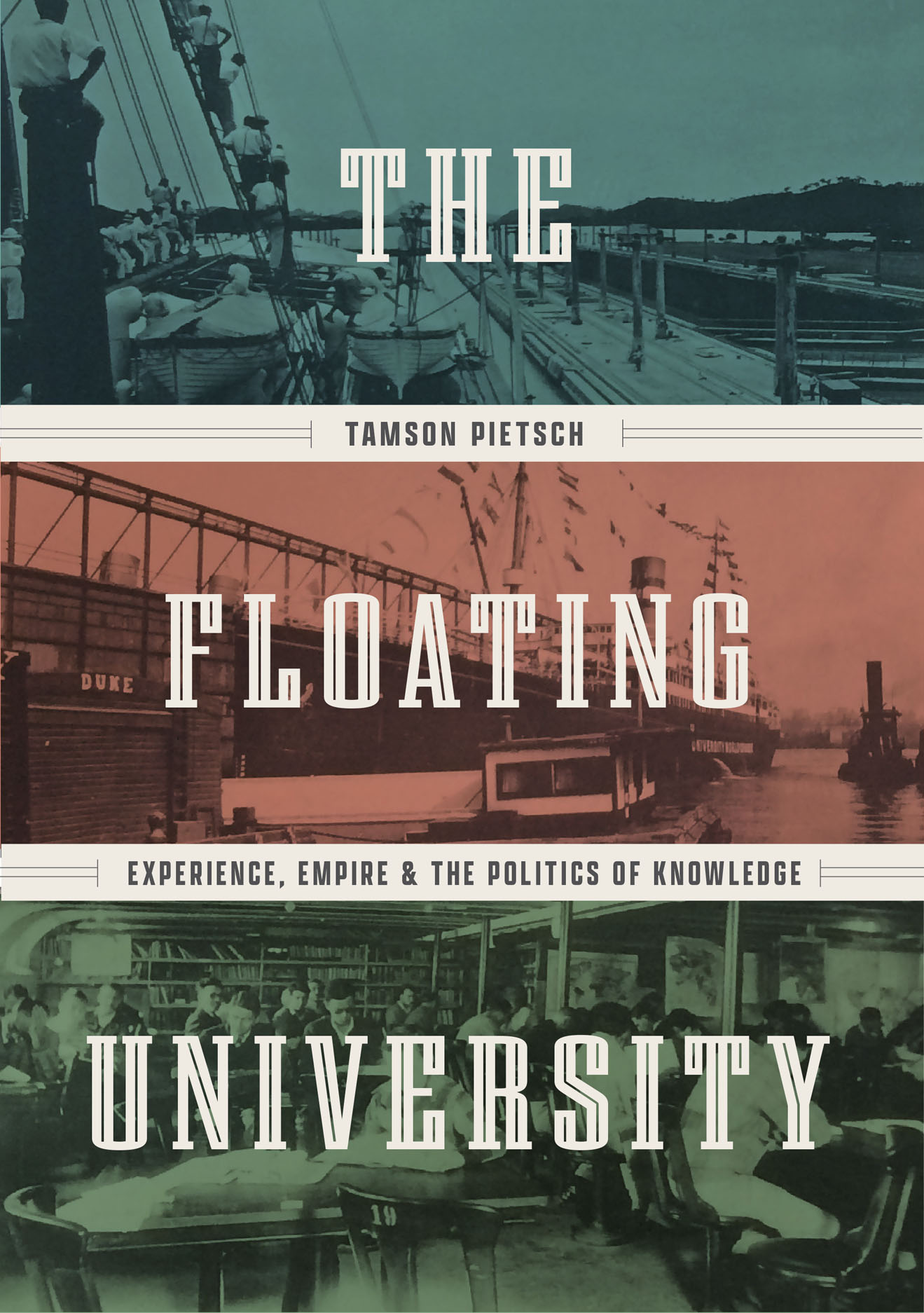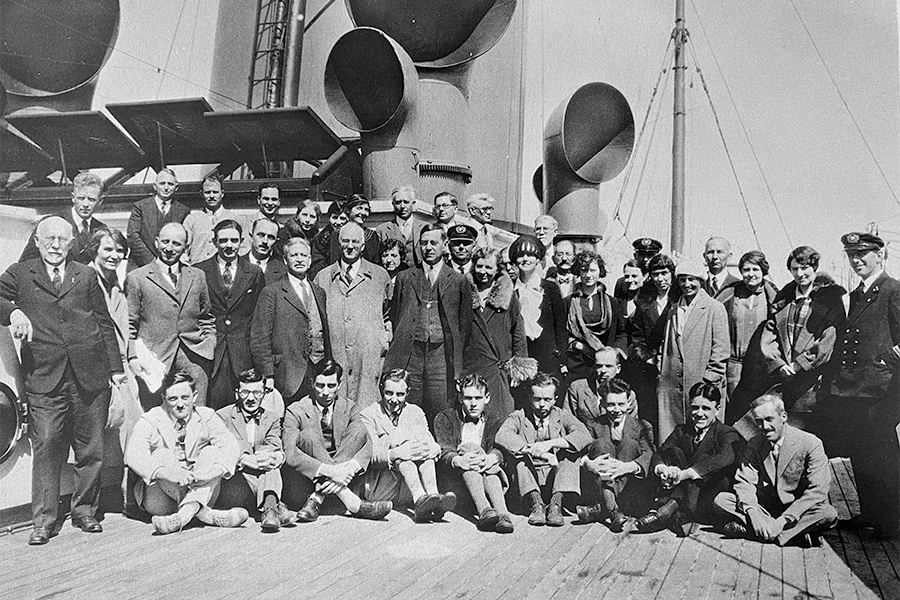
- Free Article: No
- Contents Category: Education
- Review Article: Yes
- Article Title: Navigating knowledge
- Article Subtitle: Learning by seeing and doing
- Online Only: No
- Custom Highlight Text:
Novelists and historians alike must choose how to tell their story. They may prefer a traditional authoritative voice, recounting the story in chronological order. Events surprise or shock as they unfold on the page, arriving at an apparently inevitable conclusion. This familiar organising principle holds our attention, but comes with constraints. Material must make sense within the timeline, or the narrative stalls. Think of Tolstoy’s long digression on farming in Anna Karenina or Hugo on constructing the sewers of Paris in Les Misérables, as we wait impatiently for Jean Valjean to flee the barricades.
- Featured Image (400px * 250px):

- Alt Tag (Featured Image): Glyn Davis reviews ‘The Floating University: Experience, empire, and the politics of knowledge’ by Tamson Pietsch
- Book 1 Title: The Floating University
- Book 1 Subtitle: Experience, empire, and the politics of knowledge
- Book 1 Biblio: University of Chicago Press, US$65.95 hb, 323 pp
- Book 1 Cover Small (400 x 600):

- Book 1 Cover (800 x 1200):

An alternative structure is to start small and local, and then expand the frame with each new chapter. This allows the gradual addition of perspectives. The original story gains context and meaning over time. Yet layering can be risky – too much content and the narrative tracks further and further from the starting point. Coherence is lost amid the detail.
In The Floating University, historian Tamson Pietsch frames her story through a sequence of ever wider perspectives. She starts with the story of a boat voyage from September 1926 to May 1927. Some 316 wealthy, white, male college undergraduates joined passengers on the Dutch steamship the SS Ryndam for a journey through Central America, Asia, and then Europe. They would study while at sea and explore new cultures in each port. Here was an early experiment in study abroad, inspired by the experiential psychology of William James and the writing of John Dewey, who believed that students learn best through doing things in and with the world.
Sadly, high aspirations proved insufficient. Even at $US2,500 a ticket (more than $US42,000 in today’s money), the venture struggled financially. Just before sailing, the enterprise was disowned by its original sponsor, New York University, despite the seventy-three subjects offered on board, covering a full college year, complete with exams. The visionary founder of the floating university, Professor James E. Lough, returned home to find that he had been fired. It took a long court case, fought all the way to the Supreme Court of New York, before NYU offered Lough compensation for his loss of tenure.
To illuminate these largely forgotten events, Pietsch extracts numerous voices, newspaper records, State Department correspondence, and much else beside. We learn about the invisible crew below deck and about the class, gender, and race relations implicit when privileged students sail the world (black applicants were rejected). Tabloid accounts reported japes on shore, including claims that some students had stolen a car in Yokohama to visit the underworld section of town. The US ambassador complained that the Ryndam’s time in Japan set back relations between the two nations by many years.
 University World Cruise S.S. Ryndam (from the book under review)
University World Cruise S.S. Ryndam (from the book under review)
Much commentary at the time proclaimed the journey an educational failure. There were problems – the academic leaders were sometimes under-prepared, and the ship offered insufficient classroom and library space. But, once teaching began, ‘a collegiate atmosphere’ enveloped the Ryndam.
Pietsch highlights the curricular and the extra-curricular offerings for students. Students discussed global politics and met significant leaders, from Benito Mussolini to Pope Pius XI. Some travelled overland in India to spend time with Mahatma Gandhi, then leading a revolt against British imperialism. Others started a daily newspaper on board, formed a jazz band, married fellow passengers, and drew on their experience to shape careers and communities. Successful in life, some former Ryndam students later lobbied hard for their government to support more Americans venturing abroad.
With the story established, The Floating University can slip its moorings for newer worlds. These young Americans were not encountering an itinerary chosen at random. Pietsch argues that the voyage was predicated on growing American maritime power. Here was a chance for students to experience firsthand the influence of their nation in the aftermath of World War I. During classes and shore visits, students and their teachers compared US values with life elsewhere. Those they visited looked back in turn and formed their own views about an emerging American presence in the world.
Finally, the account turns from the cruise to the educational philosophies informing American tertiary education before and after the floating university. By her final chapter, Pietsch has traversed a vast expanse, from the ambition of one academic to promote a new way of learning through the mechanics of élite American universities, to questions of empire, rapid technological change, and geopolitical shifts. The gamble with a discursive structure succeeds admirably. Through approach and substantive content, this innovative study conveys the international and intellectual history it wishes to explore.
Study abroad is now a familiar feature of higher education, and once again there are ships on the high sea offering accredited courses. That we learn by seeing and doing is now conventional wisdom. In an interview to mark her book, Pietsch cited a recent survey suggesting that one in ten American undergraduates study overseas during their degree. The anxiety of university leaders in the 1920s that engagement beyond the classroom might undermine received wisdom through lectures – and the business model of learning on campus – has faded. New York University, which dismissed Professor Lough, now hosts study-abroad campuses around the world, embracing a pedagogy it once found challenging.
Ultimately, The Floating University is a study of authority: how knowledge is produced and accredited; and who controls the pathways and the exclusion of alternative approaches from the curriculum. Starting with a 560-foot steamboat, The Floating University concludes by highlighting the values and power structures used to legitimise only some models of higher education. Along the way, the author acknowledges the contradictions and lacunae in the story, dives into unreliable archives, tracks undocumented assumptions, and notes that any methodology will struggle to reconstruct any historical moment from fragments.
To work within such constraints, yet provide a satisfying narrative, takes meticulous research and extraordinary writing. The Floating University transforms a forgotten venture into an exploration of an industry, a rising empire, and the contested ownership of knowledge. It offers a memorable contribution to the literature on higher education.


Comments powered by CComment